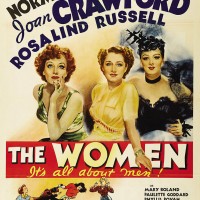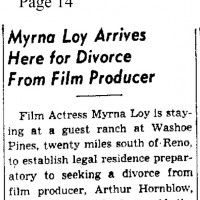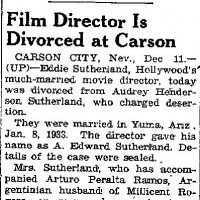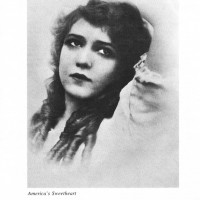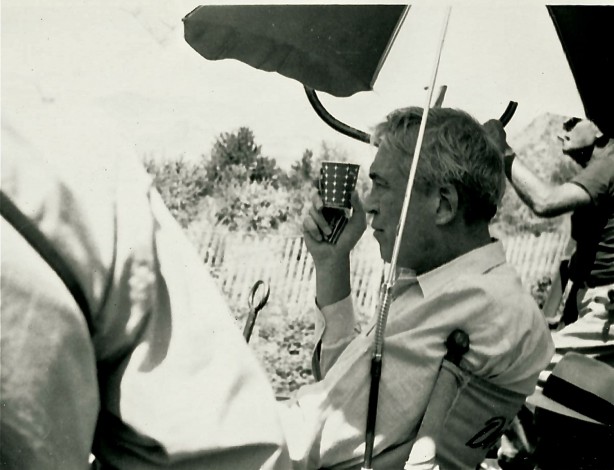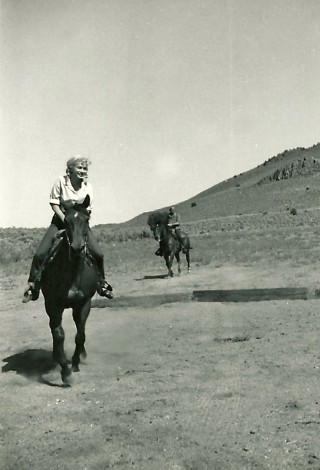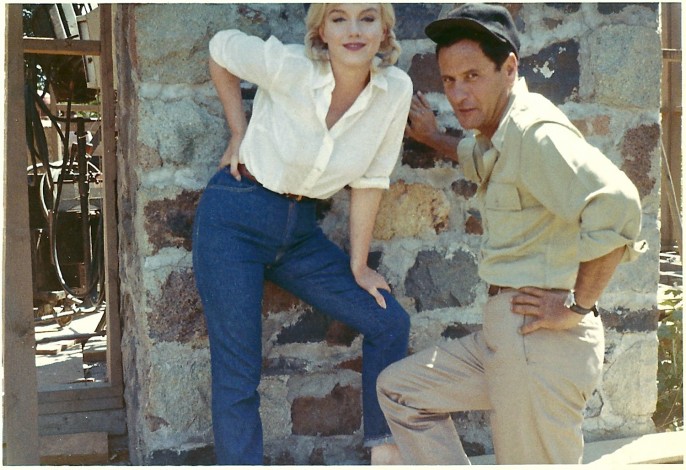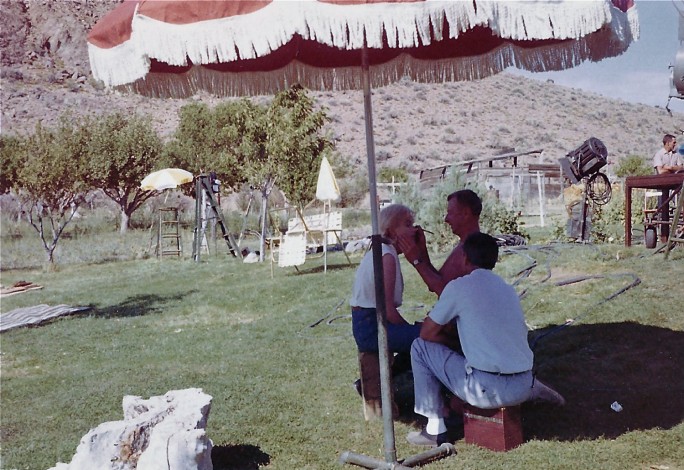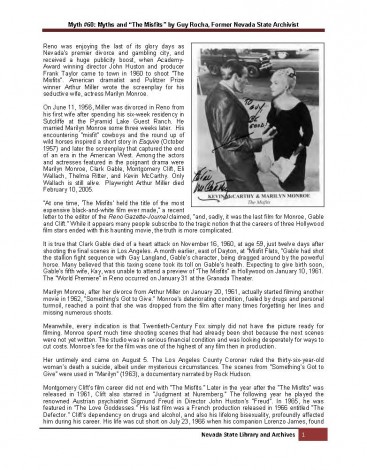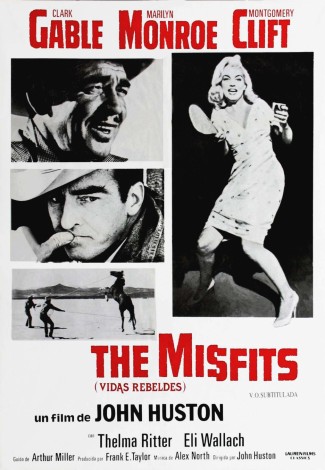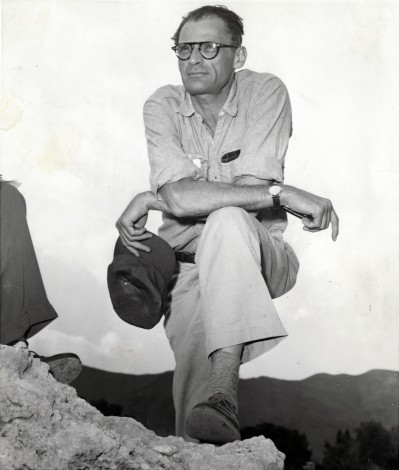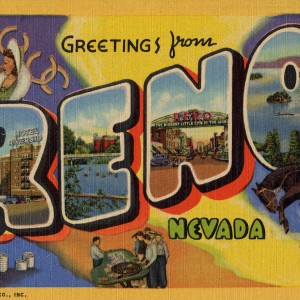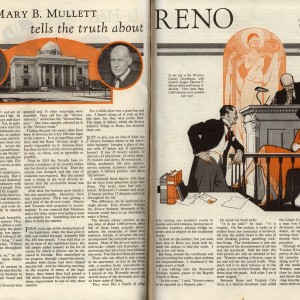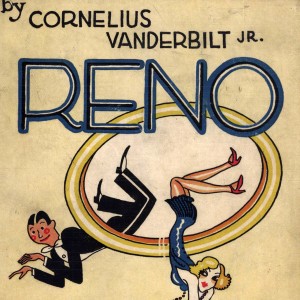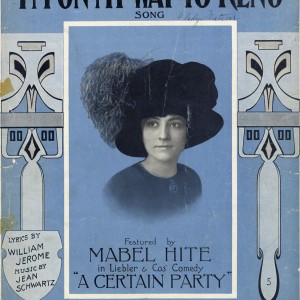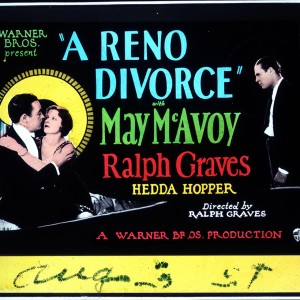The Reno divorce played a role in American cinema from the earliest years of both. The first known production of this genre was the 1910 silent film, A Reno Romance, which featured a couple going to Reno for a divorce and then changing their minds. From that moment through 1985, more than 60 feature films featured or mentioned Reno’s famous divorce industry. Overflowing with tales of heartbreak, mistaken identity, slapstick, and revenge, the cinematic potential of the Reno divorce seemed endless.
Reno films of the silent era tended toward melodrama, including the 1913 film, The Cure. Filmed on location, the story concerns a young woman awaiting a divorce who takes up with other “divorce colonists” as they visit local nightspots. In the 1920s, Reno-related motion pictures, including The Primitive Lover (1922), Forbidden Waters (1926), and A Reno Divorce (1927), were primarily morality tales, full of tragedy, suffering, and lessons learned.
In the thirties and forties, Reno movies became more numerous and more varied—and in many cases, a lot more fun. Three films on the topic—Merry Wives of Reno, Six Weeks in Reno, and The Road to Reno—appeared in 1931 alone. Reno earned star billing in two popular film series, Charlie Chan in Reno (1939) and Maisie Goes to Reno (1944). Although inhabiting a rather short amount of screen time, the Reno divorce figured prominently in the two films perhaps most closely identified with the genre: The Women (1939) and The Misfits (1961).
As notable as the films revolving entirely around the divorce trade are the innumerable films with a single offhand reference to Reno—for decades the code for divorce. In this respect, the city’s divorce industry had a cameo appearance in movies ranging from the 1940 film His Girl Friday (in which Rosalind Russell admits to spending six weeks in Reno) to Invasion of the Body Snatchers (1956) whose lead characters both allude to time spent there.
Featured Resources
The Misfits (1961)
The Misfits looms large in the pantheon of Reno divorce cinema, for a number of reasons.
Filmed on location in and around Reno, the production featured a high-profile cast, an intriguing back story, and in the real world, a tragic end.
Based on an earlier short story by Arthur Miller and adapted by the author for the screen, the film starred Marilyn Monroe (then Miller’s wife) and Clark Gable, in what was to become the final screen appearance for both. Gable suffered a fatal heart attack ten days after shooting wrapped in November 1960, while Monroe died of an alleged drug overdose in August of 1962, having divorced Arthur Miller in early 1961.
Although a few later films alluded to Reno divorce, the 1961 release of The Misfits in a sense foreshadowed the end of Reno’s divorce trade. The movie opens as Marilyn Monroe’s character, Rosyln, prepares for her appearance in court to receive her divorce decree. After stopping by Harrah’s Club for a celebratory drink with her landlady (and resident witness), Isabelle (Thelma Ritter), she embarks on a listless journey with a batch of misfits including an aging cowboy named Gay (Clark Gable), an auto mechanic named Guido (Eli Wallach), and an aspiring rodeo star named Perce (Montgomery Clift).
At its heart, the film is not about divorce at all, but a disappearing west, mourned by its stalwart defenders and baffling to modern observers. Just as the characters played by Clark Gable, Eli Wallach, and Montgomery Clift were anachronisms in a changing world, so too was Reno being forced to adapt to societal change. A few more years would pass before the migratory divorce trade was rendered obsolete; for its part, the film offered little hope that its characters would be able to adapt and ultimately find happiness.
